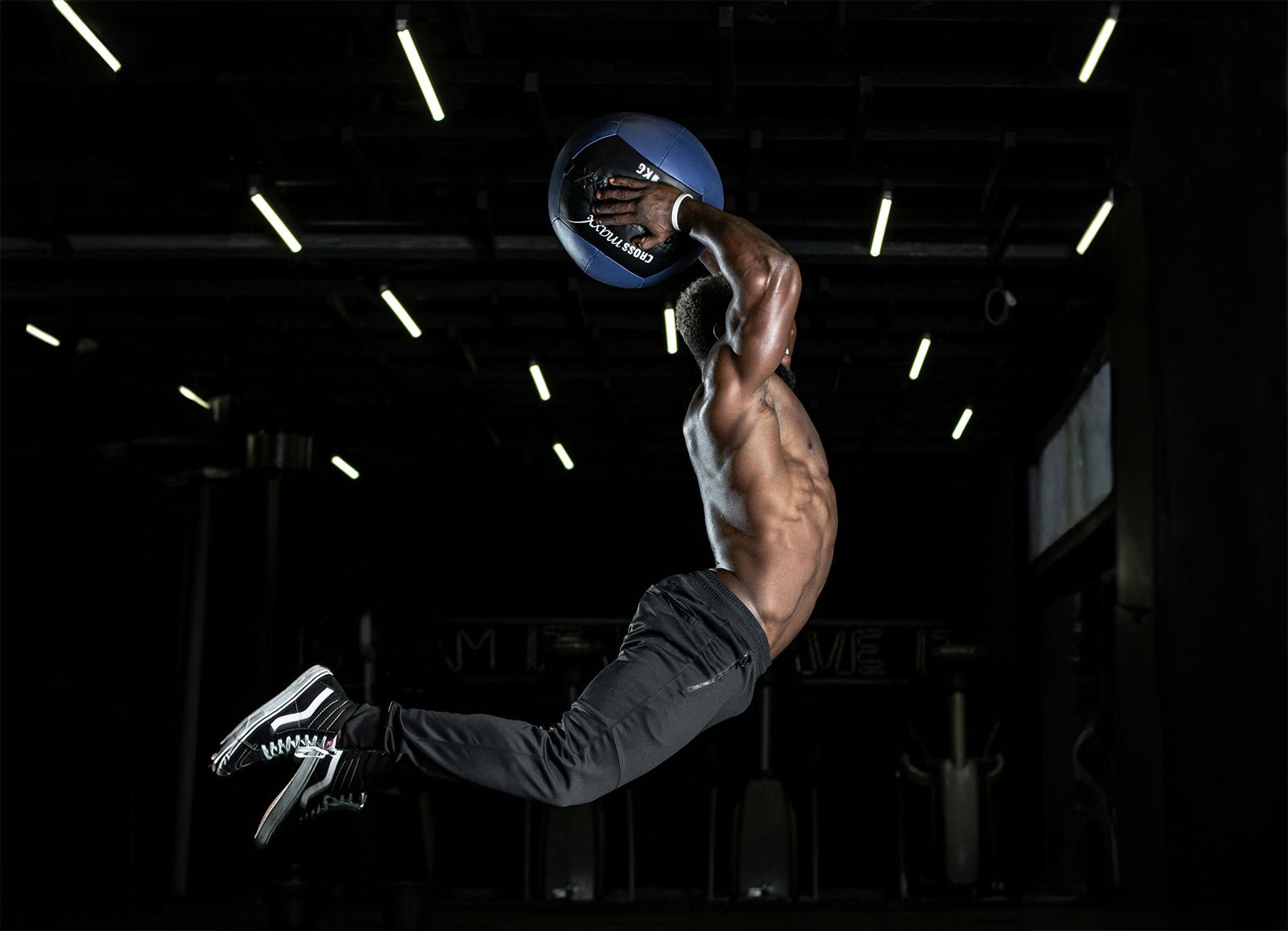The Benefits Of Deep Squats
It’s no secret that sitting at a desk for hours every day can cause neck, back, and shoulder pain, but it also affects your lower body as well. Extended periods of sitting can lead to tight hip flexors, weakness in your glutes, hamstrings, and quads, and a compressed spine. Not to mention, poor posture! There are tons of ways to help combat these issues, including sitting on an exercise ball, using a standing desk, or doing dead hangs, but one of my favorite easy exercises for mobilizing and strengthening your lower body is deep squats.
In the days before ergonomic chairs (or any chairs at all), humans used the deep squat to rest their weary bones as they performed most of their daily activities like gathering, cooking, eating, and childcare. Squats have evolved into the strength training exercise we perform in the gym with weights, but learning how to hold a deep bodyweight squat can also be a pretty effective way of training on its own. Read on to learn about the benefits of deep squats, how to do them correctly, and how practicing them regularly can strengthen your lower body while helping to eliminate the pain and discomfort from sitting at a desk all day.
What is the proper form for deep squats?
Deep squats are pretty easy to do once you know the proper form. Start by standing with your feet shoulder-width apart and your toes pointing slightly outward. Then, hinge at your hips and push your butt back as though you were going to sit in a chair. Bend your knees and lower down until your thighs are parallel to the ground or below. You ideally want to get to the point where your hips are lower than your knees. Once you’re in the correct position, try to hold it as long as possible before standing up and shaking out your legs (this will help release the muscle fatigue and tension that can occur from holding static positions).
Here are a few other form cues to keep in mind when squatting deep:
Try to keep your chest up and your shoulders back. You can press your hands together at your chest to help with this.
Draw your belly button towards your spine to engage your core muscles.
Keep your spine as neutral as possible and avoid rounding or arching too much.
Keep your knees aligned with your toes
Make sure your heels are on the ground and your feet and knees aren’t collapsing inward. You can use your elbows to push your knees outward.
Look straight ahead and don’t lean forward too much
What are the benefits of deep squats?
Here are some of the health and fitness related benefits that come from doing deep squats:
Better Mobility
When you regularly practice a deep squat, you can increase the flexibility of your ankles, knees, and hips. This leads to deeper and more stable weighted squats, allowing you to add more weight without the risk of injury. The increased mobility in your hips helps also helps to reduce the discomfort and tightness that can occur from sitting for long periods of time.
Improved Lower Body Strength
As I mentioned before, people who sit for long periods of time can encounter weakness in their lower bodies. Deep squats help negate that by activating the muscles in your glutes, hamstrings, quads, and calves. This helps build both strength and stability, and can help you unlock deeper weighted squats.
Better Core Strength and Improved Posture
When you get into a deep squat, your abdominals, obliques, and lower back muscles are activated in order to stabilize your body. Over time, this engagement of your core muscles helps improve your overall core stability and reduce the risk of back injuries. Strengthening these muscles also helps support your spine and pelvis, leading to improved posture, as well as the reduction of another side effect of a sedentary life: anterior pelvic tilt.
Increased Joint Health and Bone Density
Deep squats help to strengthen the muscles around your hip and knee joints. When you have strong muscles you can absorb impact more easily, leading to less strain on your joints and making it less likely that you’ll get injured. Deep squats can also increase your bone density. When you’re in a deep squat, you’re loading your weight onto the bones in your hips, thighs, and lower spine. This act of weight bearing causes new bone material to be formed, which increases the density and strength of the existing bone.
Healthier Feet
Having strong, healthy feet is essential, and luckily, deep squats can help with that. Squatting can improve the mobility in your ankles, strengthen the muscles in your feet for more stability, and enhance the proprioception (or body awareness) of your feet. Doing deep squats also strengthens the muscles around the ankles and calves, which can provide pain relief for your feet. To get the most benefit for your feet when doing deep squats, it’s a good idea to practice them barefoot or in minimalist footwear like Xero Shoes.
How long should you hold a deep squat?
The amount of time that you should hold a deep squat can vary depending on your fitness level and flexibility/mobility, but here are a few guidelines. If you’re just starting out or have limited mobility, try holding a deep squat for around 10-20 seconds, and really try to focus on using the correct form.
The more comfortable you become in a deep squat, the longer you can try holding them for. If you’re at the point where your fitness and mobility level allows you to hold your deep squats for a minute or longer, you can try challenging yourself by increasing your hold time a bit every day. You might even get to the point where you can eat a whole meal in the deep squat position.
Why can't I squat deep?
If you find it uncomfortable to hold a deep squat for more than a few seconds, you can try adding in some other mobility movements in the squat position to help loosen up your body. You can opt to pause briefly at the bottom of your deep squat before standing up and then repeating for a few reps. You can press your knees in and out with your elbows to open up and loosen your hips. You can do torso twists within the deep squat position, lifting one hand up as you twist while the other hand is on the floor in front of you for support. If you find that your feet aren’t flat on the ground or your balance feels off, you can use a kettlebell as a counterweight to help keep you upright and in the correct form.
If you’ve tried the mobility exercises above and still find deep squats uncomfortable or you’re having trouble getting into a squat at all, tight hamstrings or inflexible ankles are usually the culprit. If that’s the case, you can try stretching those areas before getting into the deep squat position.
There are also a couple of products I’d recommend as well that can help stretch and mobilize your hamstrings and ankles. A solid stretching strap with a foot cradle is the best way to stretch both areas along with your calves. If you’re really struggling with ankle flexibility, try using a slant board that allows you to change the angle so you can find the best stretch for your body. Please note, if doing a deep squat causes you any type of pain, it’s probably a good idea to check with a physical therapist.
All in all, deep squats offer a number of great benefits, and are a great way to strengthen and mobilize your lower body. If you find yourself experiencing pain, discomfort, or weakness in your lower body because of sitting at a desk, I suggest you try out deep squats for a while to see if your situation improves.











